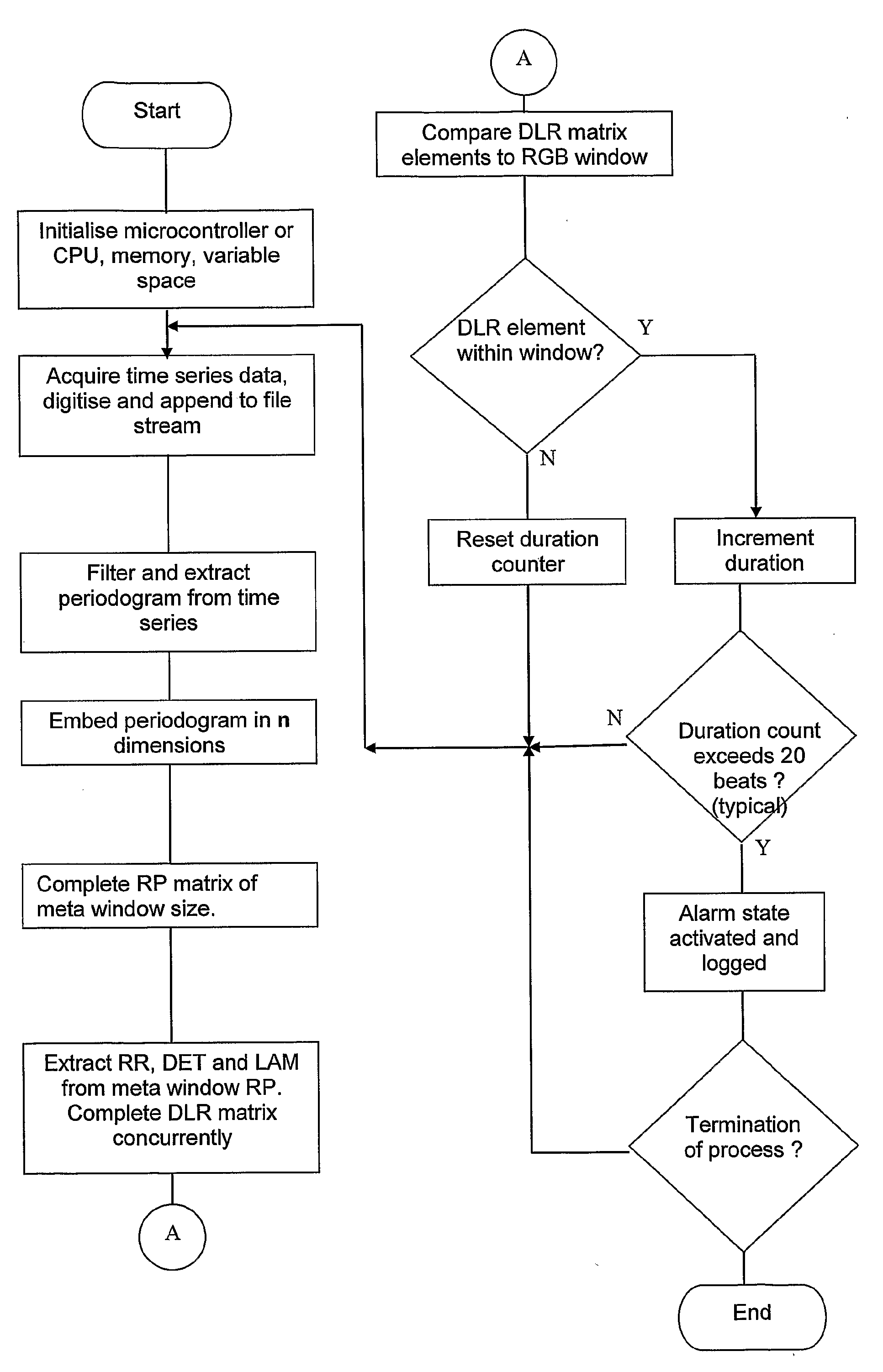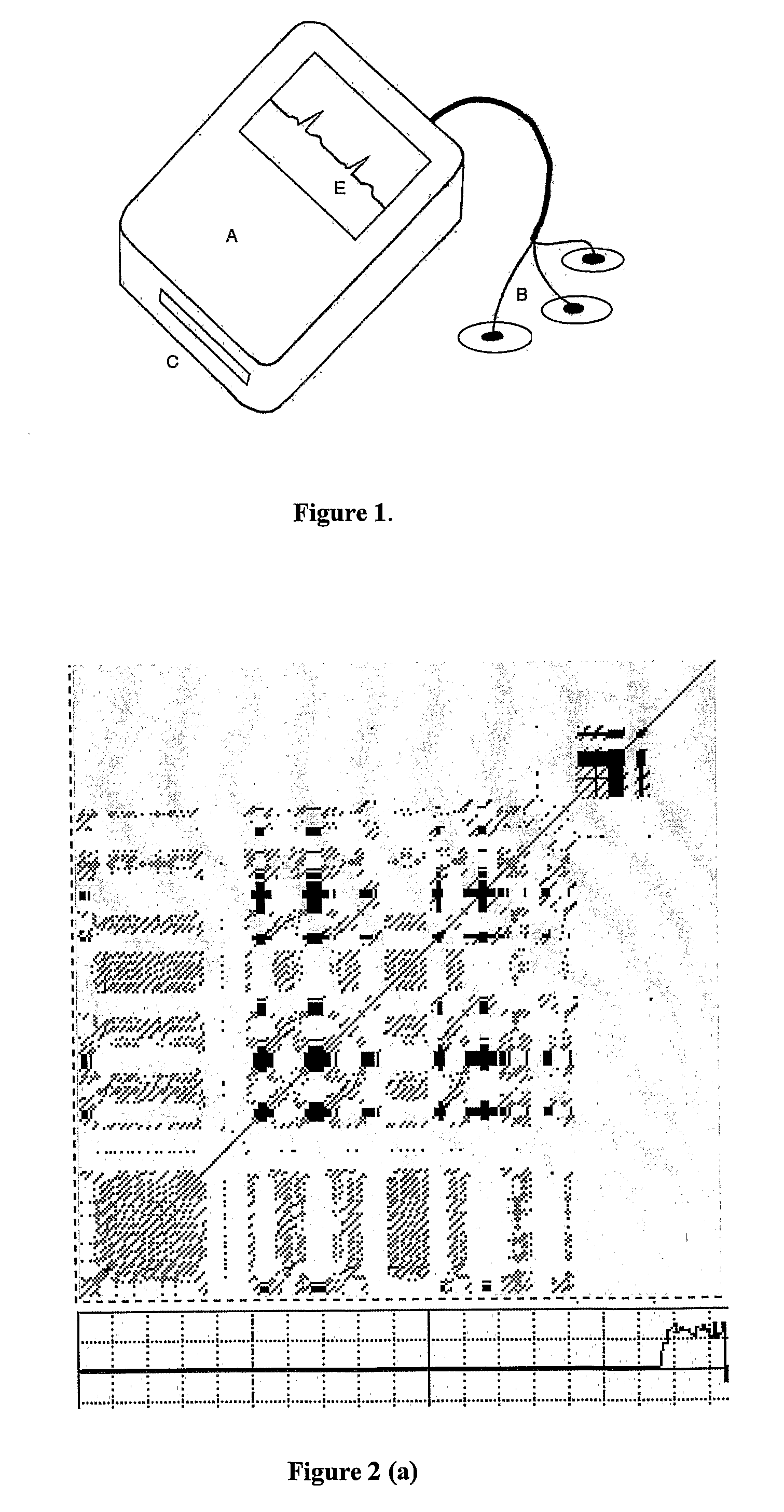Medical Monitoring System
a monitoring system and medical technology, applied in the field of medical monitoring systems, can solve the problems of reducing the fidelity of replayed data, affecting the analysis of recorded signals, and suffering loss of fidelity of recorded data, so as to achieve better descriptors of behaviour and predictive capabilities
- Summary
- Abstract
- Description
- Claims
- Application Information
AI Technical Summary
Problems solved by technology
Method used
Image
Examples
first embodiment
[0063]In a first embodiment, a fixed system in which biosignals representative of heart rate are digitised, stored and analysed using the DLR method is implemented as per the flowchart of FIG. 5. A bioamplifier provides signal conditioning to biopotentials obtained from surface electrodes applied to the subject. An analog to digital conversion provides a raw signal from which a beat-to-beat interval can be found using known techniques. This period versus time, or tachogram, is then a suitable data stream for application to the DLR method. Such a fixed system has application, for example, to bedside monitoring for the purpose of real time alarm activation. Analysis of data after it has been collected is of use for identifying at risk patterns. Therapeutic actions may then be taken on the basis of this analysis.
second embodiment
[0064]A second embodiment is optimised for ambulatory or portable use. The purpose of such a device is primarily for alarming the subject and / or clinician of the incipient risk of potentially dangerous rhythms. A storage function allows post hoc analysis and archived alarm states to be retrieved for review and the exercising of therapeutic options.
[0065]The ambulatory recording device is formed in the shape shown in FIG. 1 with a display window and a plurality of user operated switches. A cable consisting of a number of conductive leads exits the enclosure and is applied to the subject. A removable memory card is accessible but hidden for normal use.
[0066]The display can show real time signal as well as confirm operating status to the user.
[0067]The device can be operated by firmware to carry out the two general roles of managing an operating system and recording, as well as analysis in which an implementation of recurrence analysis is operating.
[0068]A signal acquired from a period...
PUM
 Login to View More
Login to View More Abstract
Description
Claims
Application Information
 Login to View More
Login to View More - R&D
- Intellectual Property
- Life Sciences
- Materials
- Tech Scout
- Unparalleled Data Quality
- Higher Quality Content
- 60% Fewer Hallucinations
Browse by: Latest US Patents, China's latest patents, Technical Efficacy Thesaurus, Application Domain, Technology Topic, Popular Technical Reports.
© 2025 PatSnap. All rights reserved.Legal|Privacy policy|Modern Slavery Act Transparency Statement|Sitemap|About US| Contact US: help@patsnap.com



